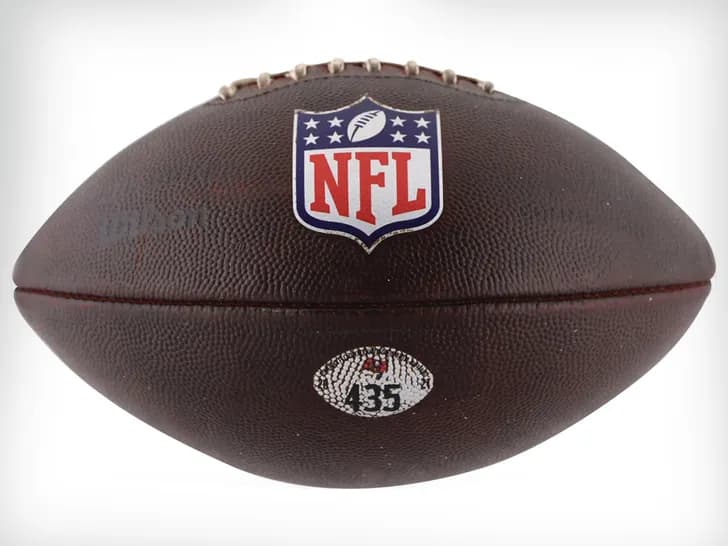
Home Staging Effect? Not Much!
A recent study finds that home-staging services affect a home’s sale price less than most people think How much does a tacky purple wall color affect a home’s sale price? Not much, according to new research on home staging. Option 1: Some study participants saw a home rendering with ugly purple walls and mismatched furniture. Troy Hines/HBA Architecture & Interior Design While good staging does influence a home buyer’s overall impression of a house, staging alone doesn’t result in buyers willing to pay more for the house, says Michael Seiler, professor of real estate and finance at the College of William and Mary, who researched how home buyers responded to six house tours that varied in paint color and furniture quality. His findings show that buyers are willing to pay roughly $204,000 in each of the house examples, regardless of the quality of furnishings or paint color. However, the research subjects believed that other buyers would adjust their pricing based on how the house is staged. Option 2: Other participants saw a rendering of a room with neutral paint color and matching furniture. Troy Hines/HBA Architecture & Interior Design “We were able to parse out what you consciously believe and subconsciously believe,” Mr. Seiler says. “Beforehand, everyone thinks poor staging is going to be a problem. But when we actually did the experiment, we found it doesn’t matter.” Mr. Seiler and co-authors Mark Lane of Old Dominion University and Vicky Seiler of Johns Hopkins University led 820 home-buyers through one of six virtual house tours in March 2012. Using professional-grade rendering software created by an architecture firm in Virginia Beach, Va., each house featured either a “neutral” beige wall color or an “unattractive” purple paint color, and “good” furniture, “ugly” furniture or no furniture. The neutral and attractive options were chosen to appeal to the greatest number of people, Mr. Seiler says. The home buyers then reported what they would be willing to pay, as well as their overall impression of the house. Still, Mr. Seiler warns: “All we could test is how much the home would sell for. What we don’t know is whether a well-staged home will sell faster. It may sell quicker.” The study, “The Impact of Staging Conditions on Residential Real Estate Demand,” has been accepted by the Journal of Housing Research for publication sometime next year, he said. It may be hard to persuade real-estate professionals of the findings. Doug Eichman, a real-estate agent with Core in New York City, spent more than $30,000 to stage a Midtown East penthouse co-op listed for $6.995 million. His stager, Cheryl Eisen, president of New York City-based Interior Marketing Group Inc., says staging works when buyers feel emotionally connected to the house. “The bare-bones reason for staging initially is to show buyers how they can function in a space,” Ms. Eisen says. “When you go over the top, you make them have an emotional reaction to the space. If they fall in love with the space, they will be willing to pay for it.” Darci Willis, a real-estate agent with Century 21 Scheetz in Carmel, Ind., says that when potential buyers are on the fence, a well-staged home may be a deciding factor. “Even though people logically know that they can change the paint color, it can be distracting and off-putting. Buyers are thinking emotionally at that point,” she says. Skip Dreibelbis, Auctioneer & CEO True Blue Auctions
Read More

Auction Sale under the Sale of Goods Act, 1930
Read More

Auctioneer Discretion in Reopening the Bidding to Recognize a Timely Tendered Missed Bid
I was watching another lawyer argue an appeal once, and one of the judges, paraphrasing a point that the lawyer had just made, asked – “Are you saying that . . . .?”. The lawyer responded – “That’s not what I’m saying, your Honor, that’s what the General Assembly said, I’m just repeating it.” That was a great answer that was wholly accurate in the context of the case, and he ultimately won the appeal based on the application of the statutory language.
With that backdrop, let’s look at an auctioneer’s discretion to reopen the bidding to recognize a timely tendered missed bid (i.e., a bid tendered before the fall of the hammer, but brought to the auctioneer’s attention only after the fall of the hammer). Auctioneers (and people who might be willing to sue an auctioneer) have been barraged by “expert” advice on social media – accompanied by a copious amount of table pounding – advising, first, that auctioneers can’t reopen the bidding, and, then (after being confronted with the law as it actually exists), advising that auctioneers should never, never, never reopen the bidding even if it is consistent with the law and industry practices.
The rationale for the “you should never, never, never reopen the bidding” advice is – as near as I can tell – multifold: first, BECAUSE I SAID SO, second, BECAUSE IT MIGHT DISCOURAGE BIDDERS FROM ATTENDING YOUR NEXT AUCTION, and third, BECAUSE IT MIGHT RESULT IN A LAWSUIT. These reasons are not compelling. The first rationale (because I said so) is not a sound argument, and rarely works on anyone over the age of four. The second rationale (because it might discourage bidders from attending your next auction) raises the ethical question as to the possible elevation of an auctioneer’s interest in potential future revenues over the interests of the auctioneer’s current seller. And, with respect to the third, while it is a good idea to avoid litigation when reasonably possible, I’m not sure it’s reasonable under all circumstances to give away the seller’s money to avoid a meritless lawsuit.
Writing about auction law, teaching auction law classes at several schools of auctioneering, and presenting to various auctioneer associations across the country, I have observed that an auctioneer has the discretion to reopen the bidding to recognize a timely tendered missed bid. To be clear, however, that’s not what I’m saying, that’s what the General Assembly in every state that has adopted Article 2 of the Uniform Commercial Code (49 out of 50) has said, and that’s what numerous courts (including courts in Louisiana, the state that has not adopted Article 2 of the UCC) have said. I’m just repeating it.
Moreover, the exercise of discretion to reopen the bidding to recognize a timely tendered missed bid has been a long-standing industry practice. By way of example, in 1744, Samuel Baker (the founder of the firm that became known as Sotheby’s) provided for the possibility of reopening the bidding in his Bidder Terms and Conditions.With respect to the UCC, Section 2-328(2) provides that –
A sale by auction is complete when the auctioneer so announces by the fall of the hammer or in other customary manner. Where a bid is made while the hammer is falling in acceptance of a prior bid the auctioneer may in his discretion reopen the bidding or declare the goods sold under the bid on which the hammer was falling.
As a matter of law, then, an auctioneer has the discretion to reopen the bidding to recognize a timely tendered missed bid. To be clear, however, that’s not what I’m saying, that’s what the General Assembly in 49 out of 50 states has said. I’m just repeating it. Moreover, the courts have recognized an auctioneer’s discretion to reopen the bidding to recognize a timely tendered missed bid (see Callimanopulos v. Christie’s Inc., 621 F. Supp. 2d 127 (S.D.N.Y. 2009); Kline v. Fineberg, 481 So.2d 108, 109 (Fla. App. 3 Dist., 1985); Hoffman v. Horton, 212 Va. 565, 186 S.E.2d 79 (Va. 1972)). Again, that’s not what I’m saying, I’m just repeating it.
So, let’s talk about discretion. One definition of “discretion” is “the freedom to decide what should be done in a particular situation.” This means that an auctioneer exercising his or her discretion to reopen the bidding may exercise that discretion in favor of reopening the bidding to recognize a timely tendered missed bid, or may exercise his or her discretion against reopening the bidding to recognize a timely tendered missed bid. There are numerous factors that might influence the exercise of that discretion. By way of example (but not limitation):
- If an auctioneer is selling a $10,000,000 property in Colorado and the missed bid represents a $250,000 advance, circumstances might weigh in favor of reopening the bidding.
- If an auctioneer is selling a $3,000,000 painting in New York and the missed bid represents a $100,000 advance, circumstances might weigh in favor of reopening the bidding.
- If an auctioneer is selling a $200,000 piece of farm equipment in South Dakota and the missed bid represents a $10,000 advance, circumstances might weigh in favor of reopening the bidding.
- If an auctioneer is selling $5.00 box lots in Ohio and the missed bid represents a $1.50 advance, circumstances might weigh against reopening the bidding.
While there will, naturally, be other considerations, I expect that most auctioneers recognize the difference between a high-value asset and a $5.00 box lot, and also recognize that different considerations may be implicated based on asset class, asset value, and the needs of the seller, and that, perhaps, a $5.00 box lot should not be the tail wagging the dog in the auction industry.
To be clear, regardless of your position on reopening the bidding, UCC 2-328 (as written, and as interpreted by the courts) gives the auctioneer the discretion to reopen the bidding to recognize a missed bid, or not. Discretion means that it is the auctioneer’s choice on a case-by-case basis. Certainly, that choice ought to take the interests of the seller into consideration. And, if it is your up-front determination to never, never, never reopen the bidding regardless of the circumstances, regardless of the value of the asset, and regardless of the interests of the seller, you should probably advise the seller of that determination when the seller is deciding whether to hire you. Also, you really want to consider whether it makes sense for an auctioneer to abandon a right afforded under the law (that is also consistent with industry standards as established over hundreds of years) to avoid a possible frivolous lawsuit by a bidder who harbors the unsustainable belief that you shouldn’t have reopened to bidding to recognize a timely tendered missed bid.
This brings me to an interesting point, I have read several social media posts in which a self-proclaimed industry “expert” argues, both, that (i) auctioneers should never, never, never reopen the bidding, and (ii) auctioneers should never, never, never use Bidder Terms and Conditions that vary the effect of any provisions of Article 2 of the UCC (even though that possibility is consistent with the function of the Article 2 as a gap-filler statute, and even though that possibility is expressly recognized in Section 1-302 of the UCC). One of the problems with that advice (and that’s not to say that there is only one problem) is that, while an auctioneer has the right to start the auction by saying “Sold means sold, and I will never, never, never reopen the bidding,” by doing so, the auctioneer is introducing terms that vary the effect of Section 2-328(2) of the UCC. Yes, waiving the discretion to reopen the bidding (or not) up-front (as opposed to exercising that discretion one way or the other on a case-by-case basis) varies the effect of Section 2-328(2) of the UCC. As such, adopting a policy to never, never, never, reopen the bidding (and incorporating that policy into your Bidder Terms and Conditions) and never, never, never using terms that vary the effect of Section 2-328 of the UCC are two mutually exclusive conditions that cannot exist at the same time. Thus, when auctioneers are encouraged to adhere to both of these mutually exclusive conditions, perhaps they should question whether that advice is reasonable, reliable, and informed, or just made up. You might also want to ask how the never, never, never reopen the bidding position can be reconciled with the view adopted by the General Assembly in each of 49 states, as well as the founder of Sotheby’s.
THIS ARTICLE IS FOR INFORMATION AND DISCUSSION PURPOSES ONLY, AND IS NOT INTENDED AS, AND CANNOT BE RELIED ON AS, LEGAL ADVICE. NO ATTORNEY-CLIENT RELATIONSHIP IS INTENDED OR ESTABLISHED. SPECIFIC QUESTIONS SHOULD BE REFERRED TO AN ATTORNEY OF YOUR OWN CHOOSING.
Read More

Understanding the Risk Associated with the Auction Purchase of the Brady Football
On Sunday, January 23, 2022, Tom Brady threw a 55-yard touchdown pass to wide receiver Mike Evans who, after scoring, tossed the ball into the stands. A week later, Brady made the surprising announcement that he was retiring from professional football. Because of Brady’s announced retirement, the ball was not just tied to Brady’s 86th playoff touchdown (a seemingly unpassable record), but it became the ball used for Brady’s final career touchdown. On March 12, 2022, the football was at auction for $518,628 (including Buyer’s Premium). Then, on March 13, Brady tweeted that he was un-retiring, and was planning to play for Tampa Bay in the 2022 NFL season. Sports memorabilia experts have speculated that Brady’s un-retirement resulted in a precipitous drop in the value of the football.
Not surprisingly, there has been discussion about the legal rights and responsibilities of the auctioneer, the seller, and the buyer under these circumstances. In some of these discussions, there has been speculation as to whether, under the Uniform Commercial Code, the buyer could reject the football as nonconforming goods, or, if the buyer had taken possession, whether the buyer could revoke acceptance of the football as nonconforming goods. I have also even seen speculation about whether the auction house somehow misrepresented the nature or character of the football. I don’t find these assessments, or associated theories, compelling. First, at the time of the auction, the football was exactly as described. And, because Tom Brady hasn’t yet thrown another touchdown, the football is, today, exactly as described at the time of the auction. So, there was certainly no misrepresentation by the auction house, and to suggest otherwise is just silly. Also, the UCC doesn’t afford the buyer the opportunity to reject acceptance of, or to revoke acceptance of, conforming goods. And, as of today, the football constitutes conforming goods. Moreover, because it appears that the Bidder Terms and Conditions did not reserve title in the seller until payment was made by the buyer, by operation of Section 2-328 of the UCC, the buyer owns the football (which is subject to possessory liens in favor of the seller and the auction house), and is obligated to pay the hammer price and the buyer’s premium.
So, how should we look at this situation from a legal perspective. To start, it is important to recognize that every auction transaction involves risk, and each auction transaction may involve risk that is unique to the specific transaction. The first question to be asked, then, is – What was the risk associated with the auction purchase of Tom Brady’s final career touchdown football? The second question might be – Did the auction house guarantee that Tom Brady would not un-retire?
The provenance of the football was well documented, and, therefore, the risk of whether this was THE FOOTBALL was pretty well covered. Plus, the auction house warranted authenticity (i.e., that this was THE FOOTBALL). So, what was the risk? The risk, from a value perspective, was that Brady might un-retire (which he has announced) and that he might throw another touchdown (which he hasn’t done yet, and may never do). Nothing in the Bidder Terms and Conditions, or in the UCC, made the auction house the guarantor of Tom Brady’s retirement. It’s as simple as that. I would argue that the value of the football vis-à-vis Tom Brady’s retirement status was a risk assumed by the buyer. In this regard, hindsight suggests that a call from the buyer to Lloyd’s of London (or some other provider) to explore customized insurance products might have been prudent.
How this is handled among the parties may, largely, be a business decision. From a legal perspective, however, with the exception of an action by the seller and/or the auction house to enforce the buyer’s payment obligation, any litigation might be premature and unsustainable.
THIS ARTICLE IS FOR INFORMATION AND DISCUSSION PURPOSES ONLY, AND IS NOT INTENDED AS, AND CANNOT BE RELIED ON AS, LEGAL ADVICE. NO ATTORNEY-CLIENT RELATIONSHIP IS INTENDED OR ESTABLISHED. SPECIFIC QUESTIONS SHOULD BE REFERRED TO AN ATTORNEY OF YOUR OWN CHOOSING.
Read More




